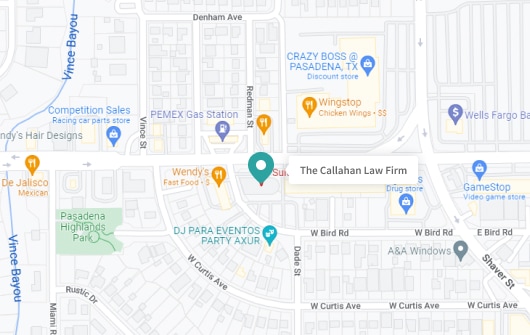Is Emotional Distress a Personal Injury?

Are you among the many who’ve suffered from targeted attacks, dangerous threats, or devastating nightmares? If so, you know firsthand the toll emotional distress can take. But did you know that emotional distress can also be considered a personal injury, potentially entitling you to compensation through a lawsuit?
This article will explore emotional distress’s impact and the available legal options. We’ll examine its causes, symptoms, and consequences and discuss how the legal system recognizes emotional distress as a valid personal injury claim.
What is a Personal Injury?
Personal injury is the physical, mental, or emotional harm an individual suffers due to another party’s negligent or intentional actions.
While personal injury often pertains to physical harm, it also includes mental anguish or emotional distress as a legitimate form of injury. Personal injury claims arise from truck accidents, medical malpractice, workplace incidents, product defects, or intentional acts. These claims seek to compensate the injured party for their tangible and intangible losses.
Importance of Understanding the Relationship Between Emotional Distress and Personal Injury
Understanding the relationship between emotional distress and personal injury is important for several reasons:
- It acknowledges the profound impact of emotional suffering on an individual’s life, well-being, and ability to function.
- Emotional distress can lead to severe consequences, including depression, anxiety disorders, sleep disturbances, impaired relationships, and reduced productivity.
Recognizing this relationship is crucial within the legal framework. Many jurisdictions consider emotional distress as a compensable element of personal injury claims.
Knowing that emotional distress is a valid form of harm, individuals who have experienced emotional trauma can seek appropriate legal remedies to ensure they are compensated for their pain and suffering.
Understanding Emotional Distress
Emotional distress is a significant aspect of our mental and emotional well-being. It involves a range of emotions, such as anxiety, depression, and post-traumatic stress disorder (PTSD).
The term refers to the psychological pain, suffering, and anguish individuals experience due to traumatic events or distressing circumstances. It encompasses many emotions, including fear, anxiety, sadness, anger, and confusion. Unlike visible physical injuries, emotional distress primarily affects mental and emotional well-being.
Types and Symptoms of Emotional Distress
- Generalized Anxiety: Generalized anxiety is characterized by excessive worry, restlessness, and constant unease. Individuals with this type of emotional distress may experience difficulty concentrating, irritability, muscle tension, and sleep disturbances.
- Depression: Depression involves persistent sadness, hopelessness, and a loss of interest in activities once enjoyed. Symptoms may include changes in appetite, weight, fatigue, difficulty sleeping or oversleeping, feelings of guilt or worthlessness, and thoughts of self-harm or suicide.
- Post-Traumatic Stress Disorder (PTSD): PTSD is a specific type of emotional distress that develops after a person experiences or witnesses a traumatic event. Symptoms can include intrusive memories or flashbacks, nightmares, severe anxiety, avoidance of event reminders, emotional numbness, and hyperarousal.
Causes of Emotional Distress
- Traumatic Events: Emotional distress can be triggered by traumatic events such as accidents, natural disasters, physical or sexual assault, domestic violence, or the sudden loss of a loved one. These events can disrupt an individual’s sense of safety and security, leading to emotional turmoil.
- Chronic Stress: Prolonged exposure to chronic stressors, such as ongoing financial difficulties, work-related pressure, or strained relationships, can contribute to emotional distress. The accumulation of stress over time can overwhelm an individual’s coping mechanisms, leading to emotional exhaustion and distress.
- Relationship Issues: Troubled relationships, whether romantic, familial, or social, can give rise to emotional distress. Conflict, betrayal, emotional abuse, or the breakdown of significant relationships can profoundly impact one’s emotional well-being.
- Life Transitions: Significant life changes such as divorce, relocation, job loss, or retirement can disrupt an individual’s stability and trigger emotional distress. Adjusting to new circumstances or coping with the loss of familiar routines can be emotionally challenging.
Understanding emotional distress involves recognizing its diverse manifestations, including generalized anxiety, depression, and PTSD. Identifying potential causes, such as traumatic events, chronic stress, relationship issues, or significant life transitions, is crucial as it helps individuals seek appropriate support, intervention, and coping strategies to address and manage emotional distress effectively.
Personal Injury Laws in Texas
Like many other places, Texas has specific laws to protect people who have suffered personal injuries. These laws establish the legal framework for seeking compensation when someone else’s negligent or intentional actions cause harm. Understanding the basics of personal injury laws in Houston is essential for individuals seeking legal recourse for their injuries.
Types of Personal Injuries Recognized by Texas Law
Texas law recognizes various types of personal injuries that can give rise to legal claims. These injuries encompass both physical and emotional harm. Physical injuries can include fractures, sprains, head injuries, burns, etc. Emotional injuries, such as emotional distress, anxiety, or PTSD resulting from the incident, are also recognized as valid personal injuries under Texas law.
Legal Requirements for Filing a Personal Negligence Injury Claim in Texas
To file a personal injury for negligence claim in Texas, certain legal requirements must be met. These requirements typically include:
- Duty of Care: The injured party must demonstrate that the person or entity responsible for their injury owed them a duty of care. This duty refers to the legal obligation to act reasonably and prevent foreseeable harm.
- Breach of Duty: It must be shown that the responsible party breached their duty of care through their negligent or intentional actions, thereby causing harm to the injured party.
- Causation: There must be a clear link between the injuries suffered by the claimant and the breach of duty. It must be proven that the injuries directly resulted from the responsible party’s actions.
- Damages: The injured party must demonstrate the extent of their damages, including medical expenses, lost wages, pain, emotional distress, and other related losses.
Emotional Distress as a Component of Personal Injury Claims

Emotional distress is vital in personal injury claims, recognized as compensable damage. While physical injuries may be more visible, emotional distress holds equal importance in acknowledging the psychological pain and suffering experienced by individuals.
Differentiating Between Physical and Emotional Injuries
In personal injury claims, distinguishing between physical and emotional injuries is essential. While physical injuries involve bodily harm, emotional injuries encompass the psychological pain, anguish, and suffering experienced by an individual.
Emotional distress can manifest in various ways, including anxiety, depression, fear, and trauma-related disorders like post-traumatic stress disorder (PTSD). Understanding this distinction is crucial for appropriately addressing and compensating for emotional distress in personal injury claims.
Factors Influencing the Inclusion of Emotional Distress in Personal Injury Claims
Several factors influence emotional distress as part of personal injury claims. These factors may vary depending on the jurisdiction and specific circumstances of the case. However, common considerations often include the following:
- The severity of Emotional Distress: The intensity and severity of the emotional distress experienced by the injured party play a role in determining its inclusion in a personal injury claim. Severe emotional distress resulting in significant impairment, physical manifestation of the distress and long-term consequences is more likely to be compensable.
- Causation and Connection: Establishing a clear causal link between the defendant’s actions and the emotional distress suffered by the claimant is crucial. It must be demonstrated that the emotional distress directly resulted from the defendant’s negligent or intentional behavior. In most cases, Texas law will require that the injured person has suffered a bodily injury or other damages before they can make a claim for mental anguish or emotional distress.
- Medical Documentation and Expert Testimony: Proper documentation of the emotional distress by medical professionals and expert testimony can strengthen the claim’s validity. Medical records, evaluations, and expert opinions can provide objective evidence supporting the existence and impact of emotional distress.
- Jurisdictional Laws and Precedents: The specific laws and legal precedents in the jurisdiction where the claim is filed can significantly impact the inclusion of emotional distress in personal injury claims. To navigate this aspect effectively, it is essential to consult a knowledgeable attorney well-versed in the relevant jurisdiction’s laws.
Recognizing the significance of emotional distress as a component of personal injury claims ensures that individuals who have suffered emotional trauma receive appropriate compensation for their pain and suffering. Considering the severity, causation, medical documentation, and jurisdictional factors, emotional distress can be rightfully included in the damages sought in personal injury claims.
However, it is important to note that, unlike some other states, Texas does not reconginize negligent infliction of emotional distress as a viable cause of action. This means that in most cases, there must be some underlying physical injury or other damages that a person has suffered, along with emotional distress.
Legal Standards for Proving Emotional Distress as a Personal Injury
Proving emotional distress as a personal injury requires meeting specific legal standards. The exact standards can vary depending on the jurisdiction, but generally, the claimant must demonstrate that:
- Duty of Care was Owed: It must be established that the defendant had a duty of care towards the injured party. This duty may arise from a professional-client relationship, employer-employee relationship, or other relevant circumstances.
- Breach of Duty: The claimant must show that the defendant breached their duty of care through negligent or intentional actions, resulting in emotional harm.
- Causation: It must be proven that the defendant’s breach of duty directly caused the claimant’s emotional distress. This requires establishing a clear link between the defendant’s actions and the resulting emotional harm suffered by the claimant.
- Severity and Impact: The claimant must demonstrate the severity of their emotional distress and its impact on their daily life, well-being, and overall quality of life.
Role of Medical Evidence and Expert Testimony
Medical evidence and expert testimony are crucial in supporting emotional distress claims. They can provide objective evidence and professional opinions to bolster the claimant’s case. Medical documentation, such as psychiatric evaluations or therapy records, can help establish emotional distress’s existence, severity, and impact.
Expert witnesses, such as psychologists or psychiatrists, can provide specialized knowledge and testify to the causal connection between the defendant’s actions and the claimant’s emotional harm.
Limitations and Challenges Associated with Emotional Distress Claims
Emotional distress claims face certain limitations and challenges that can affect their success. These may include:
- Subjectivity: Emotional distress is inherently subjective, making it more challenging to quantify and prove compared to physical injuries. The lack of visible evidence can lead to skepticism and require additional efforts to substantiate the claim.
- Threshold Requirements: Some jurisdictions have threshold requirements that must be met to pursue emotional distress claims. These requirements may involve demonstrating certain severity, duration, or specific circumstances.
- Pre-existing Conditions: Pre-existing emotional conditions or mental health issues can complicate emotional distress claims. It is necessary to establish how the defendant’s actions exacerbated or caused additional harm beyond what the claimant was already experiencing.
- Mitigation of Damages: Claimants must mitigate their damages, meaning they must take reasonable steps to minimize the impact of emotional distress. Failure to seek appropriate medical treatment or therapy may affect the claim’s outcome.
Navigating these limitations and challenges requires the expertise of a skilled personal injury attorney. They can guide claimants through the legal process, ensure compliance with relevant standards, and help gather compelling evidence to support emotional distress claims.
Understanding the legal considerations surrounding emotional distress as a personal injury is crucial for successfully pursuing compensation.
Seeking Compensation for Emotional Distress in Houston

Suppose you have experienced emotional distress due to a personal injury in Houston. In that case, taking certain steps to protect your rights and increase your chances of obtaining compensation is important. These steps include:
- Seek Immediate Medical Attention: It is crucial to prioritize your well-being by seeking medical treatment for your physical and emotional injuries. Prompt medical attention ensures your health and safety and establishes a documented record of your injuries and the associated emotional distress.
- Document Evidence: Gathering evidence is essential in supporting your emotional distress claim. This can include photographs of physical injuries, written accounts of the incident and its emotional impact, witness statements, and any relevant documentation, such as medical records or therapy reports. Preserve any evidence that can substantiate your claim.
- Keep a Journal: Maintain a detailed journal documenting your emotional distress symptoms, their intensity, and how they affect your daily life. This record can serve as valuable evidence when seeking compensation for your emotional suffering.
Importance of Documenting Evidence and Seeking Medical Treatment
Documenting evidence and seeking medical treatment is crucial for substantiating your emotional distress claim. In personal injury cases, tangible evidence and medical records play a pivotal role in establishing the connection between the incident, the resulting emotional distress, and the impact on your life. By documenting evidence and seeking medical treatment promptly, you can strengthen your case and demonstrate the validity of your emotional distress claim.
Process of Pursuing a Personal Injury Claim for Emotional Distress in Texas
The process of pursuing a personal injury claim for emotional distress in Texas typically involves the following steps:
- Consult a Personal Injury Attorney: Seek legal advice from an experienced personal injury lawyer in Houston specializing in emotional distress claims. They can guide you through the legal process, assess the strength of your case, and provide representation.
- Investigation and Gathering Evidence: Your attorney will conduct a thorough investigation, gathering evidence to support your emotional distress claim. This may involve interviewing witnesses, collecting medical records, obtaining expert opinions, and analyzing the incident’s circumstances.
- Negotiation and Settlement: Your attorney will negotiate with the responsible party’s insurance company to seek a fair settlement that compensates you for your emotional distress. They will advocate for your rights and work towards securing a favorable resolution.
- Litigation, if Necessary: In some cases, litigation becomes necessary if a settlement cannot be reached. Your attorney will represent you in court, presenting your case and arguing for the compensation you deserve.
Throughout this process, it is crucial to rely on the expertise of a skilled personal injury attorney who understands the complexities of emotional distress claims. They can navigate the legal system, protect your rights, and advocate on your behalf to seek fair compensation for the emotional distress you have endured.
Emotional Distress and Access to Legal Resources in Texas
Residents of Texas have access to various legal aid and resources to assist them in matters related to emotional distress and personal injury claims. These resources aim to ensure that individuals who have suffered emotional harm have the necessary support and guidance throughout the legal process. Some avenues to explore include:
- Legal Aid Organizations: Houston is home to several legal aid organizations that provide low-cost or free legal services to individuals who cannot afford private representation. These organizations often have dedicated programs that assist with personal injury claims and can help connect individuals with qualified attorneys.
- Bar Associations and Referral Services: Local bar associations and referral services can be valuable resources for finding reputable personal injury attorneys in Houston. These organizations typically maintain directories and provide referrals based on specific legal needs and qualifications.
- Online Legal Resources: The internet provides a wealth of information and resources related to personal injury claims and emotional distress. Online legal resources can provide guidance, answer frequently asked questions, and offer valuable insights into the legal process.
Importance of Consulting with a Personal Injury Attorney
Consulting with a personal injury attorney is vital when dealing with emotional distress and personal injury claims. An experienced attorney can offer several benefits, including:
- Legal Expertise: Personal injury attorneys specialize in navigating the complexities of personal injury law and emotional distress claims. They possess the knowledge and experience necessary to guide you through the legal process and protect your rights.
- Case Evaluation: An attorney will evaluate the strength of your case, helping you understand the viability and potential outcomes of your claim. They can provide an objective assessment based on their legal expertise and previous experience with similar cases.
- Negotiation and Advocacy: Attorneys have the skills to negotiate with insurance companies to seek fair compensation for your emotional distress. They will advocate on your behalf and work towards a resolution that reflects the extent of your emotional harm.
- Legal Representation: If your case goes to trial, a personal injury attorney will provide skilled representation in court. They will present your case, argue for your rights, and employ effective legal strategies to support your emotional distress claim.
Consulting with a personal injury attorney ensures that you have a knowledgeable advocate who protects your interests and guides you through the legal complexities of emotional distress claims. They can help you navigate the legal system, gather evidence, and pursue the compensation you deserve for your emotional suffering.
Are you suffering from emotional distress in Houston?
Understanding emotional distress as a personal injury is of utmost importance for Houston residents who have experienced emotional harm due to the negligence or intentional actions of others.
Emotional distress can profoundly impact an individual’s well-being, causing significant suffering and affecting their quality of life. Recognizing emotional distress as a compensable component in personal injury claims ensures that those who have endured emotional trauma can seek justice and obtain rightful compensation.
Houston residents should be aware of the legal standards, gather evidence, and consult with personal injury attorneys who can provide expert guidance throughout the claims process. By documenting evidence, seeking medical treatment, and leveraging available legal resources; individuals can strengthen their emotional distress claims and increase their chances of obtaining fair compensation.
Emotional distress is a valid and compensable damage in personal injury claims. Houston residents must understand the relationship between emotional distress and personal injury, as well as the legal considerations and steps to seek compensation using the help of an expert Houston-based personal injury lawyer.
FAQs
Q: What is emotional distress?
A: Emotional distress refers to mental pain and anguish, an emotional response to an experience that arises from the effect of a particular event, occurrence, pattern of events, or condition.
Q: What is considered an emotional injury?
A: Emotional injury is the psychological damage to the psyche of an individual caused by incident that results in bodily injuries as well as mental anguish.
Q: Does stress count as an emotional injury?
A: Stress is a feeling of physical or emotional tension. It can come from any event or thought that makes one angry, frustrated, or nervous. However, stress alone will usually not rise to the level of an emotional injury that could be compesated under Texas law.
Q: What is an example of emotional distress?
A: Emotional distress is a person’s emotional response to the accident and/or injuries, such as sadness, anxiety, fear, grief, or depression. Here are some examples of emotional distress:
- Post-traumatic stress disorder (PTSD)
- Cognitive impairments after a head injury
- Psychological trauma
- Losing sleep
- Anger or frustration due to an incident

Michael S Callahan is an attorney and founder of The Callahan Law Firm. He focuses his practice on representing individuals and families in personal injury cases involving motor vehicle and truck accidents, workplace accidents and defective products. With over 25 years of experience, he is dedicated to fighting on behalf of people whose lives have been forever altered by the negligence and carelessness of corporations and individuals. Originally trained as a mechanical engineer, Michael has been practicing law and fighting for justice for those who need it most since 1994. He is board-certified in Personal Injury Trial Law by the Texas Board of Legal Specialization and a member of various esteemed legal associations. Outside of work, Michael enjoys spending quality time with his family, outdoor activities, and continually striving to improve as a trial lawyer and human being.











